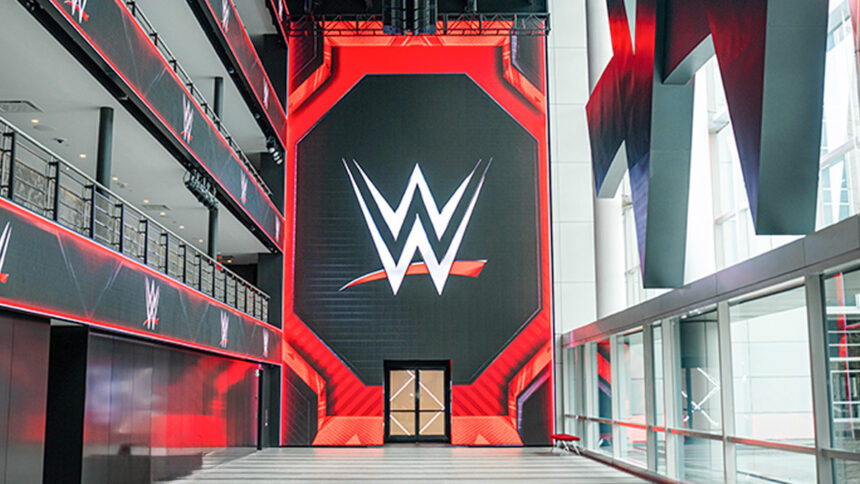When WWE announces the release of talent, dreams are shattered, careers hanging from Limbo, and performers are at a crossroads. Recently released Talents found themselves suddenly without the platform, pay, and the infrastructure they’ve become accustomed to. In many cases, there is little preparation for life outside the WWE system.
Five years after his own release, Matt Cardona (formerly Zach Ryder) emerged as both a counselor and a blueprint for wrestlers navigating this transition. Clearly in conversation Insight Along with Chris Van Vriette, Cardona details his postwell journey and the lessons he learned along the way.
The recent tweet addressing the newly released talent of WWE has resonated throughout the industry with its unclear clarity. There are three options, and only one that leads to sustainable success.
The three passes are forward
With a distinctive dullness, Cardona outlines three options available to released WWE talents.
“There are three options,” explains Cardona. “You can’t be vague, feel unwell for yourself, feel sympathy, be seen again, delusional about the price, or book again, or you can’t take off the WWE name.
However, the third option requires a considerable amount of effort.
“Translating your ass, reinventing yourself, have lots of them [expletive] Have fun and make lots of it [expletive] money. “
Cardona concludes:
“There are three options. Choose. The third is not easy, but possible, but possible.”
Option 1: Fade vaguely
The first passes from the wrestling landscape are shown more frequently than fans notice. A wrestler who has built an entire identity around being a WWE superstar can have a hard time finding a purpose outside of that structure.
Some talents are completely retreated from wrestling and become embarrassed after performing in the arena and not reluctant to fail releases or work in small venues. Others overestimate market value without WWE’s platform and price themselves from booking.
“You go from tens of thousands of people in your audience to dozens from dozens of people from time to time, but hopefully, literally dozens,” Cardona admits the adjustment.
This dramatic shift psychologically breaks performers and fails to handle perceived downgrades. Rather than adapt, they withdraw their careers that end effectively at the WWE departure.
Option 2: Coast run past reputation
The second pass – the WWE Fame Coast – represents the most common trajectory, according to Cardona.
“I think history shows that they fall in number 2.”
This approach involves minimal reinvention and instead relies on WWE name recognition to ensure occasional reservations and custom appearances. These wrestlers can primarily trade with nostalgia rather than creating new, memorable moments.
Although financially viable in the short term, this approach rarely leads to creative fulfillment or lasting relevance. WWE’s fame ultimately reduces bookings as FADE disappears without new achievements to replenish interest.
Option 3: Reinventing with hard work
The third pass, the route chosen by Cardona – envisages merciless effort, creative reinvention, and entrepreneurial thinking. Not only do you accept reservations, you need to completely rethink your wrestling identity and business approach.
“Independence is not easy, especially since many of these men and women don’t know what it’s like to become independent,” Cardona admits. “I didn’t know, and I had to teach myself because I had to jump into my head first.”
For Cardona, this means:
- Reinventing the character: Developing “The DeathMatch King” and later “Complete” Matt Cardona persona, unlike Zack Rider
- Accepting grind: Work shows of all sizes, from major independents to small fairs
- Business Development: Treat wrestling as a business with multiple revenue streams
- Social Media Advantages: Posts 10-20 times a day across the platform
- Merchandising innovation: Create unique product items beyond standard T-shirts
Ego Challenge
According to Cardona, the main obstacle is ego, not talent. Many wrestlers struggle to embrace the change in reality necessary for independence.
“I think you had to accept that,” advises Cardona. “When I’m doing push-ups on the street or getting mad between two trash cans, I say, ‘This is that, babe. I’m going here.’ I’m not doing it with Boo Boo’s face.
This attitude adjustment does not naturally come to everyone. Cardona says, “I’m not naturally positive. I won’t wake up like a great day today. No, I wake up and naturally say, ‘That glass is half empty.’
Learn from my predecessor
Cardona did not forge this path alone. He studied people who had successfully transitioned before him.
“I stole things from Cody and Drew McIntyre, the ones who left and made my name even bigger,” Cardona admits. “And I created my own blueprint.”
Rather than trying to completely reinvent the wheel, the willingness to learn from other people’s success models accelerated Cardona’s post-WWE growth. By analyzing what worked for others while adapting strategies to his unique strengths, he created a customized approach to independence.
Financial Reality: Make More Money
Perhaps most surprising, Cardona reveals that his financial success exceeds his WWE revenue.
Cardona responds without hesitation “100%” when asked directly whether he would make more money than the best WWE years.
He states: “Now, guys and girls in WWE, they have those big deals. I didn’t have those huge deals. So if I were released now, if some of those people were making money that’s making, I wouldn’t be making the same amount.
This economic success comes through diversification. “It’s wrestling, it’s podcasts, it’s customs, signing signing, pro wrestling tea, figure business. It’s all combined.”
The role of mentorship
Five years after his post-WWE career, Cardona became a resource for newly released talent in search of guidance.
“I got a call yesterday,” Cardona mentions, referring to the recently released wrestler. “Some people knew me, some people didn’t know me. Some people said, ‘Thank you for that post. It really set fire under my ass.’ ”
Cardona accepts this mentorship role. “I’m not a gatekeeper. I’ll answer the questions they have, whether they’re released, still or not reaching WWE. I’m not saying that it’s the right answer.
The road ahead
For wrestlers facing the release of today’s wrestling landscape, Cardona’s third path offers the potential for survival as well as prosperity. Post-WWE’s opportunities for success have never been greater as more independent promotions are running, streaming services provide visibility and social media provide direct fan connections.
“Don’t stop,” Cardona advises briefly. “It’s not finished until I stopped. When I stopped, it was over.”
Five years after his own release, Matt Cardona stands as living proof that the WWE departure could be a beginning rather than an end.
“I’m going to keep my ass working,” Cardona declares, embodying the way he transformed him into a wrestling success story independent of the talent he released.
For today’s released wrestlers, the choice is clear. Through merciless efforts, reinvent your fadeaway, the coast, or yourself. According to Cardona, only one path that leads to both financial success and creative fulfillment begins with accepting the grind.













